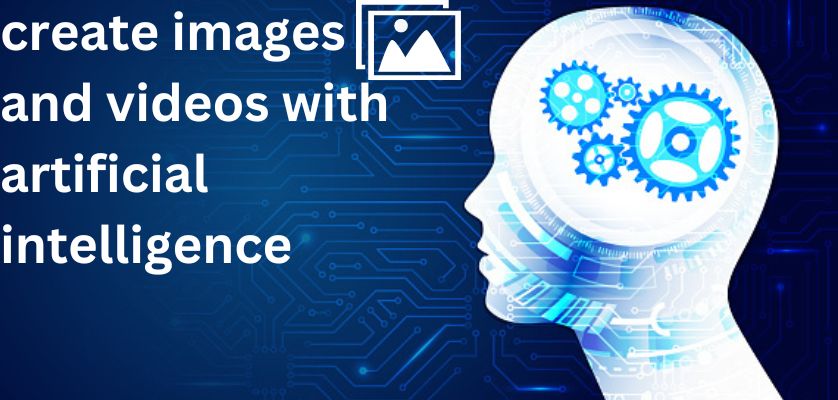Artificial intelligence (AI) has permeated nearly every facet of our lives, transforming the way we work, communicate, and even create content. One of the most exciting applications of AI in recent years is its ability to generate images and videos. This technology, often referred to as AI-generated art, opens up a world of creative possibilities and has significant implications for various industries, from entertainment to design and marketing.
In this article, we will explore the fascinating world of AI-generated images and videos, how the technology works, and the tools available to create stunning visual content with artificial intelligence.
Understanding Generative Models
At the heart of AI-generated images and videos are generative models. These models are trained on vast datasets of existing images and videos, learning to understand the patterns, styles, and structures present in the data. Once trained, they can generate new content that is often indistinguishable from what a human artist might create.
There are many types of generic models but these two models are very important:
Variational Autoencoders (VAEs): VAEs are a type of neural network that learns to encode and decode images. They are particularly useful for generating images with a certain style or aesthetic.
Generative Adversarial Networks (GANs): GANs consist of two neural networks, a generator, and a discriminator, that play a game against each other. The generator creates images, and the discriminator tries to distinguish them from real images. This adversarial process results in highly realistic images and videos.
Creating Art with AI
Now that we have a basic understanding of the underlying technology, let’s explore how to create images and videos with artificial intelligence.
1. Image Generation
AI image-generation tools have gained immense popularity in recent years. They allow users to create unique and artistic visuals with just a few clicks. Here’s how it’s done:
a. Choose a Platform or Tool
There are various online platforms and software tools available for AI image generation. Some popular options include Deep Dream Generator, Artbreeder, and Runway ML. These platforms provide user-friendly interfaces for generating images and experimenting with different styles.
b. Input Your Vision
Start by inputting your vision or idea into the tool. You can specify various parameters, such as the content and style of the image. For instance, you might want to combine the content of a landscape photo with the style of a famous painter like Van Gogh.
c. Experiment and Refine
Most AI image generation tools allow you to fine-tune the results by adjusting sliders or parameters. This iterative process lets you explore different variations until you achieve the desired outcome.
d. Download and Share
Once you’re satisfied with the generated image, you can download it and use it for various purposes, such as digital art, marketing materials, or social media posts.
2. Video Generation
Creating AI-generated videos involves a more complex process compared to images, but the results can be equally impressive. Here’s a simplified guide to creating AI-generated videos:
a. Choose a Video Generation Tool
Tools like Runway ML, DALL·E, and VQ-VAE-2 are capable of generating AI-powered videos. Some are more user-friendly, while others require programming knowledge.
b. Define Your Video Concept
Decide on the concept and content of your video. For instance, you might want to create an animated short film in a specific artistic style.
c. Prepare Your Input Data
Depending on the tool you’re using, you may need to provide input data in the form of images, text, or other media. The AI model will use this data to generate the video.
d. Generate and Edit
Let the AI model work its magic to generate the video. Afterward, you can edit and refine the video using video editing software to add music, subtitles, or additional effects.
e. Share Your Creation
Once you’re satisfied with the final video, you can share it on platforms like YouTube, Vimeo, or social media to showcase your AI-generated masterpiece.
Applications of AI-Generated Images and Videos
The ability to create images and videos with artificial intelligence has numerous applications across various industries:
1. Entertainment and Media
AI-generated art has found a place in the world of entertainment, from creating stunning visual effects in movies to generating music videos and virtual reality experiences.
2. Advertising and Marketing
Marketers use AI-generated visuals to create eye-catching advertisements, personalized content, and interactive campaigns that engage audiences more effectively.
3. Design and Creativity
Designers and artists leverage AI to explore new creative possibilities, generate unique patterns, and experiment with different artistic styles.
4. Education and Training
AI-generated images and videos are used in educational materials and simulations, making learning more engaging and interactive.
5. Healthcare and Medicine
In medical imaging, AI-generated visuals help improve diagnostics and treatment planning by generating detailed and informative medical images.
Challenges and Ethical Considerations
While AI-generated images and videos offer immense creative potential, they also raise important challenges and ethical considerations. These include:
Copyright and Ownership: Determining the ownership of AI-generated content can be complex, leading to legal disputes.
Bias and Fairness: AI models trained on biased data may produce content that perpetuates stereotypes or discrimination.
Misinformation: AI-generated content can be used to create convincing fake news or misinformation.
Privacy: AI tools that generate content from text may inadvertently reveal sensitive information.
Artistic Integrity: The use of AI to create art raises questions about the role of the artist and the authenticity of the work.
conclusion
The ability to create images and videos with artificial intelligence is a captivating field that continues to evolve rapidly. While it presents exciting opportunities for creativity and innovation, it also requires careful consideration of the ethical and legal implications. As AI technology continues to advance, it’s crucial to strike a balance between harnessing its creative potential and addressing the associated challenges. With the right approach, AI-generated images and videos can inspire, entertain, and enrich our lives in new and imaginative ways.

